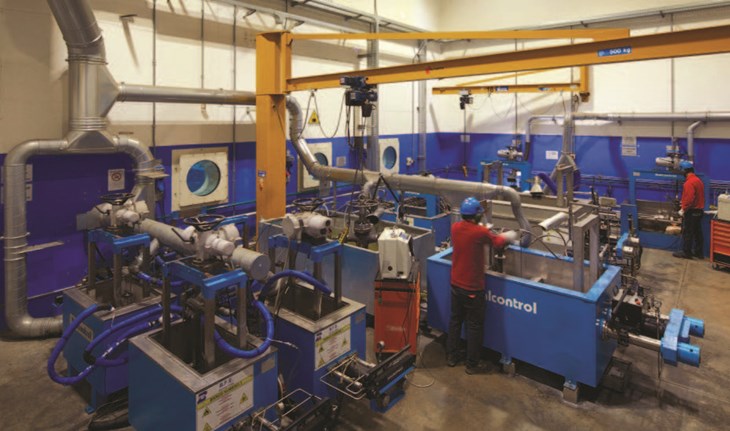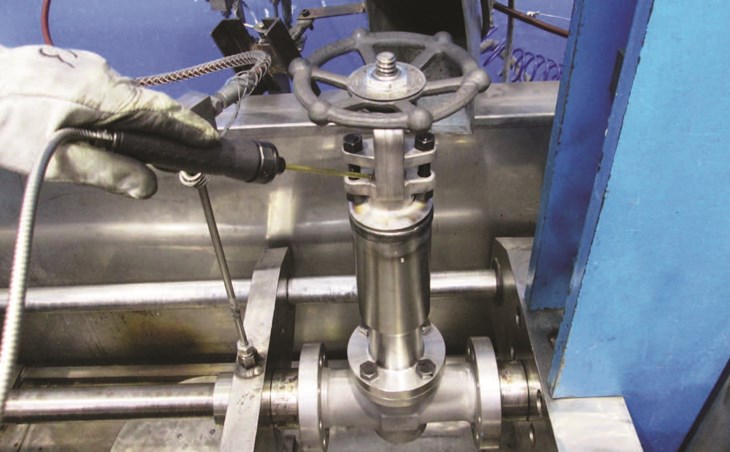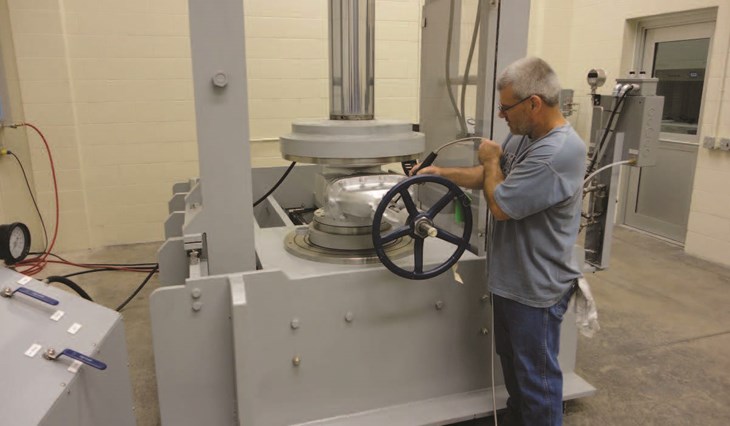With over 140 years of experience, Bonney Forge has forged a reputation for delivering the best, most comprehensive flow control solutions to its customers. For decades the company has elevated its offerings by not only being an active member of standards committees, such as ASME and API, but by paving the way for low emission (Low-E) valve manufacturing.
“Bonney Forge has played a leading role in low emissions valve technology for over a decade, often meeting requirements before the standards are set. We continually strive to exceed the environmental protection agency’s (EPA) and industry requirements and have therefore always taken a position as a leader in fugitive emissions,” said Thomas.
As an early adopter of the requirements imposed by the EPA, the company has remained ahead of the curve. By being actively involved in the creation of the regulations affecting the industry, the company has been set apart from its competitors. “There was an understanding that requirements were going to change, and even before they were implemented we started taking action,” reflected Harrigan. By 2011, Bonney Forge had low emission compliant valves on the shelves; these came 3 years before initial API 624 valve requirements were released to the public in 2014. “While API 624 requirements were not made mandatory until 2015, Bonney Forge had been testing valves at five times the number of testing cycles that API 624 requires, with a leakage rate of less than 50 ppm,” said Heald. “We have been able to provide less than 100ppm leakage continuously for over 10 years across all of our products.”
As a manufacturer with an inherent responsibility to better the market, Bonney Forge does not rest at type testing. All of its valve production facilities in China, Italy, and the United States, have fugitive emissions testing equipment used to perform production checks. Bonney Forge provides Certified Low Leak Technology (CLLT), validated by third party testing, data collected from end users in real world applications, and feedback from EPA audits. Altogether, this allows Bonney Forge to ensure that it remains the leader of low emissions products.
“Our company motto includes price, quality, and service, so we dedicate a significant amount of time to testing; we take safety very seriously. The systems that we have been continuously improving over the last 10 years result in a product that is responsibly provided to the industry,” added Harrigan.

Low Emissions Not Just Tested, Proven
Quality assurance is a top priority for Bonney Forge and as a result, the company has back-integrated manufacturing and testing facilities to best control its processes. By controlling all manufacturing aspects such as: forging, casting, machining, assembling, and testing, quality is kept at the highest standards, exceeding ASTM, ASME, API, ISO and other global industry standards. As an example, Bonney Forge provides certification for not only the products themselves (like low emissions certifications for valves), but the material that the products are made from. All Bonney Forge products have fully traceable certified mill test reports which are accessible from the website. “Automation is a key driver in manufacturing repeated quality products, with frequent hands-on process auditing,” commented Thomas.
“We have seen end users replacing other valves due to lack of documentation, certification, or leakage above 100ppm,” said Sonzogni. To address this issue, Bonney Forge has invested in technologies that focus on ensuring that a valve will meet specific temperature requirements, and creating valve packing that meets API, ISO, and TA Luft specifications.
“Delivering consistently top quality and diverse products has helped us to not only meet, but out-perform the ppm restrictions established by the EPA,” explained Heald. “Our success with technologies like the Bonney Forge Eco-Seal®, which has shown to be the proven solution in many applications, led us to a unique position of awareness. Realizing there will always be demand for new technologies or tighter restrictions in the changing market, Bonney Forge adjusts accordingly,” continued Sonzogni.

The Future Of Valves For Low Emissions
With the evolution of alternate energy sources, it is only a matter of time before emissions requirements become more stringent in the midstream and upstream applications. Bonney Forge is therefore ready to continue providing leading products that will exceed standards.
”We believe that emissions guidelines will become more common in midstream and upstream applications,” said Heald. “There will soon be rules for natural gas processing plants and well sites. When emissions control expands into new sectors, we will be ready to offer viable solutions.”
To prepare for this not-so-distant future, Bonney Forge utilizes public information regarding upcoming rule proposals, some of which can be found here:https://www. regulations.gov/document/EPA-HQ-OAR-2021-0317-0001.
Examples of Upcoming Rules
Well sites with total site-level baseline methane emissions less than 3 tons per year (tpy): Demonstration, based on a site-specific survey, that actual emissions are reflected in the baseline methane emissions calculation,
• Well sites with total site-level baseline methane emissions of 3 tpy or greater: Quarterly Optical Gas Imaging (OGI) or EPA Method 21 monitoring,
• (Co-proposal) Well sites with total site-level baseline methane emissions of 3 tpy or greater and less than 8 tpy: Semi-annual OGI or EPA Method 21 monitoring,
• (Co-proposal) Well sites with total site-level baseline methane emissions of 8 tpy or greater: Quarterly OGI or EPA Method 21 monitoring,
• Compressor stations: Quarterly OGI or EPA Method 21 monitoring,
• Well sites and compressor stations located on the Alaskan North Slope: Annual monitoring, with separate initial monitoring requirements,
• Alternative screening approach for all well sites and compressor stations: Bimonthly screening surveys using advanced measurement technology and annual OGI or EPA Method 21 monitoring at each individual well site or compressor station.

Staying Ahead Of The Rest
Bonney Forge is constantly exploring and improving technologies, whether it be valve stem packing, manufacturing methods, or process control, it is in the company’s DNA. No matter what regulations are announced, low emissions technology development from Bonney Forge will remain its focus.
Bonney Forge has been an active member in technical committees and through contact with the EPA, which allows the company to remain up-to-date on federal requirements and topics being investigated. “As a member of various technical committees, we are well positioned to understand what the various emission targets will be moving forward,” said Harrigan. “We understand the requirements of global standards, and we implement any necessary changes prior to them being implemented in the standard itself.” As a result, Bonney Forge has been supplying Low Emission valves that meet the current global industry standards for more than 10 years.

Bonney Forge Believes In
• Continuously improving quality, processes and customer service.
• Eliminating delays, errors, and defects in materials and workmanship.
• Providing customers with access to statistical evidence that quality is incorporated in its products and production processes.
• Requiring suppliers to provide statistical evidence of quality in products and process capabilities.
• Sharing with the organization the cost of poor quality in products and services.
• Driving out fear and bringing problems to light for all to see.
• Working together to address specific problems and establish goals and solutions as a team.
• Controlling manufacturing processes which determine the final cost and quality of its products.
• Removing barriers which stand between employees and their pride of workmanship, and implementing ongoing training, supervision and employee development programs.
• Good housekeeping, which reflects on the company, its operating philosophy, and its people.
• Encouraging a corporate culture which will reinforce the objectives of its mission on a day-to-day basis.



